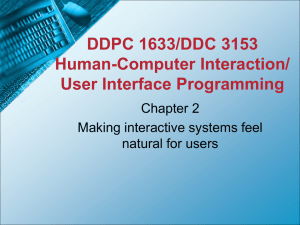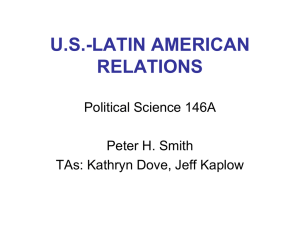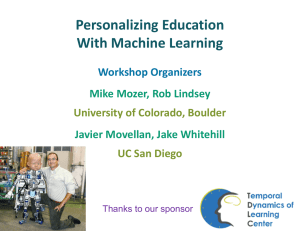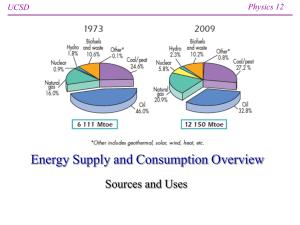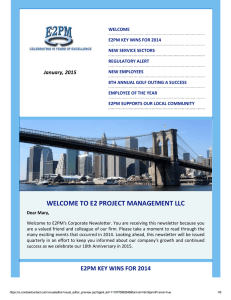patient care - UCSD Center for Pain Medicine
advertisement
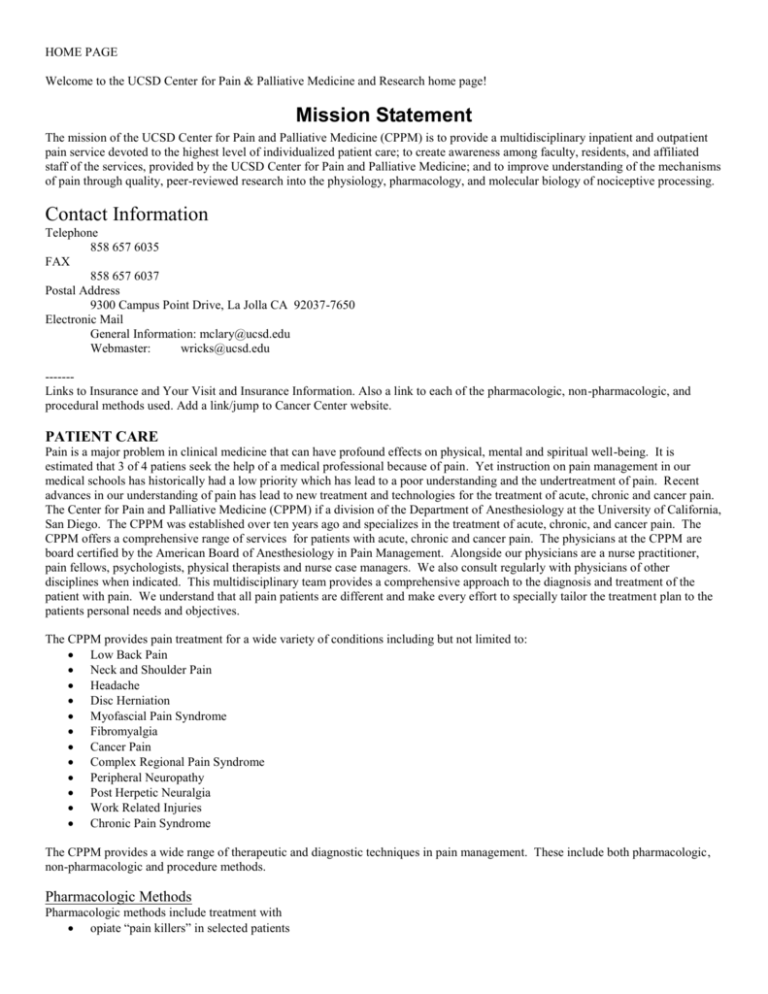
HOME PAGE Welcome to the UCSD Center for Pain & Palliative Medicine and Research home page! Mission Statement The mission of the UCSD Center for Pain and Palliative Medicine (CPPM) is to provide a multidisciplinary inpatient and outpatient pain service devoted to the highest level of individualized patient care; to create awareness among faculty, residents, and affiliated staff of the services, provided by the UCSD Center for Pain and Palliative Medicine; and to improve understanding of the mechanisms of pain through quality, peer-reviewed research into the physiology, pharmacology, and molecular biology of nociceptive processing. Contact Information Telephone 858 657 6035 FAX 858 657 6037 Postal Address 9300 Campus Point Drive, La Jolla CA 92037-7650 Electronic Mail General Information: mclary@ucsd.edu Webmaster: wricks@ucsd.edu ------Links to Insurance and Your Visit and Insurance Information. Also a link to each of the pharmacologic, non-pharmacologic, and procedural methods used. Add a link/jump to Cancer Center website. PATIENT CARE Pain is a major problem in clinical medicine that can have profound effects on physical, mental and spiritual well-being. It is estimated that 3 of 4 patiens seek the help of a medical professional because of pain. Yet instruction on pain management in our medical schools has historically had a low priority which has lead to a poor understanding and the undertreatment of pain. Recent advances in our understanding of pain has lead to new treatment and technologies for the treatment of acute, chronic and cancer pain. The Center for Pain and Palliative Medicine (CPPM) if a division of the Department of Anesthesiology at the University of California, San Diego. The CPPM was established over ten years ago and specializes in the treatment of acute, chronic, and cancer pain. The CPPM offers a comprehensive range of services for patients with acute, chronic and cancer pain. The physicians at the CPPM are board certified by the American Board of Anesthesiology in Pain Management. Alongside our physicians are a nurse practitioner, pain fellows, psychologists, physical therapists and nurse case managers. We also consult regularly with physicians of other disciplines when indicated. This multidisciplinary team provides a comprehensive approach to the diagnosis and treatment of the patient with pain. We understand that all pain patients are different and make every effort to specially tailor the treatment plan to the patients personal needs and objectives. The CPPM provides pain treatment for a wide variety of conditions including but not limited to: Low Back Pain Neck and Shoulder Pain Headache Disc Herniation Myofascial Pain Syndrome Fibromyalgia Cancer Pain Complex Regional Pain Syndrome Peripheral Neuropathy Post Herpetic Neuralgia Work Related Injuries Chronic Pain Syndrome The CPPM provides a wide range of therapeutic and diagnostic techniques in pain management. These include both pharmacologic, non-pharmacologic and procedure methods. Pharmacologic Methods Pharmacologic methods include treatment with opiate “pain killers” in selected patients anti-inflammatory drugs anti-depressants anticonvulsants. The choice or combination of medication depends upon the patient and the pain problem. Non-pharmacologic Methods Non-pharmacologic methods used by the CPPM include: Psychological evaluation and therapy Physical Therapy Acupuncture Transcutaneous Electrical Nerve and Muscle Stimulation Therapeutic Touch Chiropractic Therapy Procedural Therapy The CPPM offers a variety of procedures to treat pain. These include: Epidural Steroid Injections Diagnostic and Therapeutic Spinal Injections Plexus Blocks (Celiac/hypogastric) Sympathetic Nerve Blocks (Stellate/Thoracic/Lumbar) Facet Joint Injections Sacroiliac Joint Injections Trigger Point Injections Botulinum Toxin Injections Peripheral Nerve Blocks Radiofrequency Ablation Techniques (Both Pulsed and High Temperature) Intradiscal Electrothermal Annuloplasty Discal Nucleoplasty Spinal Endoscopy Epidural Lysis of Adhesions Intrathecal Drug Delivery Spinal Cord Stimulation These procedures are often used in combination with other therapies. In addition, the vast majority of these procedures are performed under fluoroscopic guidance. The Cancer Pain Relief Unit The Cancer Pain Relief Unit is a joint effort between the CPPM and the University of California San Diego Cancer Center. This unit specializes in the out patient symptom management of the cancer patient and the terminally ill patient. The unit provides a variety of treatments similar to those listed above. The unit has a full-time nurse practitioner who together with the physician staff provides close observation and easy access to the cancer and terminally ill patient. ------------- Education Link Fellowship & Patient Education Series UCSD Center for Pain and Palliative Medicine is dedicated to educating the clinical faculty and the training of the basic scientists with the problems associated with clinical pain states and its management. The department enjoys a significantly high level of national and international reputation. Patient Education Series The CPPM Research Group and the Peripheral Neuropathy Group conduct weekly lectures that reflect current research and thinking on issues pertinent to the physiology and pharmacology of pain processing. Managing Your Pain is an 8-week program sponsored by UCSD Department of Anesthesiology, Center for Pain and Palliative Medicine. Physicians, nurses and other healthcare professionals volunteer their time and expertise to help participants learn how to control pain and minimize its effects on their quality of life. Research has shown that individuals who know more about their healthcare needs are able to make informed decisions and become partners in their treatment team. Families and friends may also experience difficulties coping with the problems associated with the chronic pain of their loved ones. The more family members understand about pain, the better they too will be able to cope with the challenges presented by living with chronic pain. This program is to assist both patients and their families in meeting these challenges. Managing Your Pain is free of charge and is open to UCSD patients, their families and the community. TOPICS What is Pain? This session includes a broad overview of pain and also includes information regarding the role of the UCSD Center for Pain and Palliative Medicine. Surgical Procedures This session includes the various surgical and invasive procedures available, including various injections, nerve blocks, implantable stimulators and implantable pumps. Medications Used To Treat Pain This session includes information on medications currently used for treating pain. Body Work This session includes the role of body mechanics, exercise and the use of massage in treating pain. Body-Mind Connection This session includes the role of complementary therapies in treating chronic pain (specifically, acupuncture, aromatherapy and harp music therapy). Pain and Emotions This session includes the role of emotions in dealing with the challenges of chronic pain. Healthy Soul This session includes the role of nondenominational spirituality and its role in coping with chronic pain issues. Research Update This session includes the role of clinical research and information on various emerging treatment therapies for chronic pain management. REGISTRATION Call the UCSD Patient Education Department at (619) 543-3640 to register for the next available class. LOCATION UCSD Thornton Hospital, 9300 Campus Point Drive, La Jolla, California. DATES This series of 8 classes is presented three times per year. Call the UCSD Patient Education Department at (619) 543-3640 to register for the next available class or obtain dates for future series. ---------------- FELLOWSHIP The UCSD Department of Anesthesiology Center for Pain and Palliative Medicine (CPPM) offers an ACGME accredited one-year clinical fellowship in pain management. The program provides a broad clinical experience in acute, chronic and cancer pain. In addition, the didactic program provides a strong foundation in both the basic and clinical sciences. The CPPM has an outstanding clinical research program that provides ample opportunity for the fellow to participate in clinical research, if so desired. CLINICAL EXPERIENCE Opportunities for patient care range from chronic outpatient to tertiary acute inpatient care. Multiple segments compose the diverse Chronic Pain Management Program. Weekly evaluation/follow up and procedure clinics are held at both UCSD Medical Center and the VA Medical Center. In addition, the Pain Fellow has the opportunity to choose up to a maximum of four weeks per year elective rotations. These elective rotations can be selected from various UCSD subspecialty programs or from the private practice sector. The CPPM provides a wide range of therapeutic and diagnostic techniques in pain management. These include pharmacological, nonpharmacological and procedure methods. Pharmacological Methods Pharmacological methods include treatment with: Chronic opioid therapy in selected patients Anti-inflammatory drugs Antidepressants Anticonvulsants. The choice or combination of medications depends upon the patient and the pain problem. Non-pharmacological Methods Non-pharmacological methods used by the CPPM include: Psychological Evaluation and Therapy Physical Therapy Acupuncture Transcutaneous Electrical Nerve and Muscle Stimulation Therapeutic Touch Chiropractic Therapy Invasive Techniques The Center for Pain and Palliative Medicine clinical fellowship training program provides experience in the following techniques: Epidural Steroid Injections Diagnostic and Therapeutic Spinal Injections Plexus Blocks (Celiac/Hypogastric) Sympathetic Nerve Blocks (Stellate/Thoracic/Lumbar) Facet Joint Injections Sacroiliac Joint Injections Trigger Point Injections Botulinum Toxin Injections Peripheral Nerve Blocks Radiofrequency Ablation Techniques (Both Pulsed and High Temperature) Intradiscal Electrothermal Annuloplasty Discal Nucleoplasty Spinal Endoscopy Epidural Lysis of Adhesions Intrathecal Drug Delivery Spinal Cord Stimulation These procedures are often used in combination with other therapies. In addition, the vast majority of these procedures are performed under fluoroscopic guidance. DIDACTICS The Center for Pain and Palliative Medicine has a diverse didactic program. The weekly pain conference schedule includes case conferences, journal clubs, pain M & M conferences and monthly lectures from faculty and invited lecturers. In addition, a multidisciplinary conference is held twice monthly along with a monthly palliative and cancer pain conference. The fellow participates in each of these conferences and also assumes responsibility for some of the presentations. A concentrated three-week preclinical didactic series is offered at the beginning of each fellowship year to provide a basic foundation in the mechanisms of pain. Additional conferences available include: Department Visiting Professor Series Department Journal Club Meetings Anesthesia Update (national conference sponsored by our Anesthesiology department) Anesthesia Review (national conference sponsored by our Anesthesiology department) ACGME Resident Core Lectures RESEARCH Each fellow is provided the opportunity to participate in an existing clinical pain research project or propose a project. Nonclinical time will be provided for patient recruitment, data collection and manuscript preparation. Many fellows have participated in clinical research projects that have resulted in presentations and/or publication in a peer-reviewed. TO APPLY For an application to be considered it must contain the following: Application form Personal statement Curriculum vitae 3 letters of reference Copies of current certificates of licensure to practice medicine Applications should be received by late summer or early fall of the preceding year, although the application process remains open until a candidate has been interviewed and selected. There is currently one fellowship position available for each academic year, beginning in July. Applications with other requested start dates will be considered. For application or more information, contact: Linda Sutherland Pain Fellowship Coordinator UCSD Center for Pain and Palliative Medicine Department of Anesthesiology 9500 Gilman Drive #0924 La Jolla, CA 92093-0924 858-657-7030 Fax 858-657-7035 lsutherland@ucsd.edu -------- PAIN RESEARCH Considerable advance have been made in the past 10 years with regard to our understanding of the mechanism underlying nociception. These advances have led to tangible developments in human pain therapy. There remains, however a significant gap between the basic research and the implementation of new approaches. There is an evolving appreciation that a variety of underlying mechanisms may be in play that account for the difficulty faced by the clinician in managing that pain. Moreover, there is considerable fruitful work being undertaken with respect to the mechanisms of nociception. It is clear that pain states are themselves uniquely complex and the pharmacology, physiology and molecular biology associated with the mechanism underlying pain reflect issues that are of fundamental interest to neurobiologists. It is thus our aim to bring current research approaches to bear on the mechanisms underlying chronic pain states. It is our belief that such approaches represent important basic scientific issues, but of particular importance they are essential for developing efficacious methods for managing pain syndromes. Members of the pain research program. The membership at the out set in the pain research program reflects the individuals who have at present considerable focus in the area of pain research. All are members of the department of Anesthesiology. This group may be characterized in terms of a high level of funding, a consistent record of publication and a high level of interaction and collaboration. Members of the clinical pain rearch program include: Mark S. Wallace, M.D., Program Director Peggy Mollen, R.N., Associate Director (pmollen@ucsd.edu) Suzanne Daneshvari, LVN, Staff Research Associate II Lina Rossetri, B.S., Staff Research Associate II Arlene Basada, B.S. Staff Research Associate I Preclinical Research Facilities There are two sites. The CTF laboratory is a secured and alarmed facility, approximately 4100 sq. ft., and is located on a single floor of the Clinical Teaching Facility at the University of California, San Diego (UCSD) Medical Center. The second site is an 1800sq ft space in the Medical Teaching Facility on the LaJolla campus. Each of the preclinical investigators have independent laboratory space, but the group is organized into a series of research cores to optimize interaction and cost sharing. All shared facilities operate on a recharge basis so that the direct expense is born by each user. Preclinical Research Goals The following outlines the essential targets encompassing the preclinical mission statement of the pain program. 1. Mechanisms of nociception that arise from disease and from therapy. Effect on nerve function effect of radiation and chemotherapeutic agents that lead to nerve damage (central and peripheral) that yields neuropathic pain states. -Asessment of allodynia, hyperalgsia Treatment effect / tumor upon nerve / DRG / spinal cord. -Local tumor / Intrathecal tumor -radiation -chemotherapeutic agent: Systemic/intrathecal Release of central and peripheral transmitters Sprouting of central and peripheral terminals. Change in sympathetic innervation of DRG and radiated site (skin / muscle dura). -Time course -Effect of suppressed/ altered immunogenicity. Effect of tumor / type on nerve function (spontaneous activity) Changes in central indices -Regulation of central receptors (NK1 up/down regulation) / IEG expression. 2. Implementation of mechanistic insights into the evolution of animal models of nociceptive processing (hyperalgesia, allodynia, spontaneous pain states) after tumor, radiation, chemotherapy and/or various combinations. Definition of hyperalgesia allodynia-hyperalgesia / pain threshold Parallel time course with changes in nerve morphology and central changes. 3. Implementation of animal models to develop mechanistic screening approaches that will target directions of pain therapy spinal pharmacology of induced hyperalgesic and neuropathic states. anti-cytokines, growth factors 4. Use of preclinical models in defining evolution of tolerance/dependence. Effect of radiation and chemotherapy on analgesic tolerance Clinical Research Program A strong clinical management program provides the basic foundation for a clinical research program. The clinical component of the pain research program is unique in that it feeds off of the intense preclinical program that has and will continue to be developed. This has allowed organization of clinical research protocols based on good science. Dr. Wallace and Dr. Yaksh have developed a strong clinical research program strongly linked to the preclinical work. The program has the following components. 1. Pharmacology of Human Experimental Pain Several specific mechanisms have been proposed for encoding nocicpetion., We have implemented human models that are believed to reflect these mechanisms and can employ them in normal human volunteers. These models involve both experimental pain states in human volunteers and neuropathic pain states. Examples of cancer pain syndromes that we believe are fitted by these models include postmastectomy pain, postherpetic neuralgia, radiation induced neuritis, chemotherapy induced peripheral neuropathy, and tumor invasion of peripheral nerves. 2. Alternative Therapies for Pain Currently, patients spend billions of dollars per year on alternative health care in spite of lack of solid scientific support. NIH has initiated a section on integrative medicine which signals the importance of this aspect of medicine. We currently have research protocols in place looking at the effects of acupuncture on pain and symptom management 3. Preclinical Directed Research Much of the work of the preclinical group feed information into the clinical research program. Information gathered from this preclinical work is used to develop clinical research protocols. These involve the use of existing drugs and lead to the development of new drugs which require an IND and phase I studies. 4. Clinical Trials in Pain There are many new analgesics emerging in the market. Pharmaceutical companies are looking for reliable sites to study these new drugs. We have developed a service that is user friendly to these companies. Our service currently has a good track record with phase I-IV clinical trials. We have been very successful with patient enrollment but can always do better. For information of currently active clinical trials, please contact Peggy Mollen, R.N. at pmollen@ucsd.edu. Links to bio Staff Our compassionate approach by our medical staff combine knowledge and expertise in the most recent pain management treatments to ensure you are provided with a highly efficient and comprehensive treatment plan. The treatment plan developed by our providers takes the whole patient into account, with special emphasis on educating patients about the nature of their condition and identifying avenues designed to relieve pain, promote healing and restore maximum levels of function. Our treatment plans use a complement of traditional and alternative approaches. The treatment staff is comprised of three fellowship-trained, board certified, anesthesiologists with American Board of Anesthesiology added qualifications in Pain Management; one fellow; a nurse practitioner, one nurse manager, one nurse case manager and rotating anesthesiology residents. A psychologist who specializes in pain patients and a neurosurgeon who has subspecialized in the invasive treatment of pain are available for regular consultation. Home Zapanta, RN Mark S. Wallace, MD Farshad M. Ahadian, MD Christine Sample, RN Albert Y. Leung, MD Ann Hoye, NP Janise Our caring and experienced support staff is available to assist with any problems or questions you may have. Macie L. Clary Practice Administrator With over 10 years in healthcare, she can help answer questions regarding referrals, scheduling, billing, or other matters pertaining to your care at the clinic. Lenor Monroy Administrative Assistant and scheduling guru for CPPM will assist you with acquisition of your medical information prior to scheduling your visit with us. ------------------------------------------------Insurance Information Our practice participates with most insurance carriers. At the time of service, we require payment for any co-payments and noncovered services. Patients are responsible for obtaining the necessary referral form, if one is required by their insurance company. Our billing representatives are available to answer questions relating to insurance claims. Please call 619 543 6125. ------------------------------------------------- Your Visit The UCSD Center for Pain & Palliative Medicine evaluates patients on a referral basis only. The referrals are received via fax and mail. HERE IS WHAT WE NEED TO SCHEDULE YOUR EVALUATION 1. 2. 3. An approved AUTHORIZATION for the first visit from your PRIMARY CARE PHYSICIAN and HMO (or designee). It is your responsibility to verify that an authorization has been issued, specific to dates and to the above listed services. It is highly recommended that you retain a copy for your records and present a copy to the clinic staff at the time of each visit. Your regular office co-payment at the time of visit. Payment of $150 at the time of your first visit to the clinic if your visit is not authorized by your carrier or if you assume responsibility for all charges associated with your initial visit. While we can offer you a first appointment as soon as you have received this letter, you will want to allow time for the HMO authorization(s) to arrive at the clinic so you can be certain your visits will be covered. Most HMO insurance have strict limitations on the services we consider essential to a full pain management evaluation. PLEASE REMEMBER THAT UNDERSTANDING YOUR INSURANCE COVERAGE IS ULTIMATELY YOUR RESPONSBILITY. The following are various informational links to the above. EDUCATION: School of Nursing, Indianapolis, Indiana Baccalaureate Degree, June 1988. Marian College, Indianapolis, Indiana. Associate in Science Degree, May 1986. Fluroscopy adds the following compelling advantages: Specific spinal pain source can be precisely targeted for diagnosis and therapy A variety of refined techniques can be employed including routine posterior interlaminar epidural injection, transforaminal epidural injection, selective nerve root block, intervertebral disc injection, and facet joint block depending on pain source Radiologic documentation of medication delivery is routine Patients with difficult anatomy can accurately injected with minimal risk Fine needles can be used, imposing less risk and improving patient comfort Radiofrequency Neuroablation Radiofrequency lesioning has recently been used successfully as a treatment for chronic, refractory neck pain from whiplash injury, a condition in which recent scientific research has identified spinal facet joints as commonly responsible for persistent pain. Facet joints may also be the source for pain in certain types of cervicogenic headache and in non radicular low back pain. Facet pain can be identified by its characteristic pattern of radiation, and the diagnosis is confirmed when pain is relieved transiently with precise fluroscopic nerve block of the facet joint nerves. Once facet joint pain is precisely localized, radiofrequency denervation of the denervation is gaining acceptance as an effective treatment option when more conservative approaches fail to relieve symptomatic relief with minimal risk and low morbidity. Facet denervation is gaining acceptance as an effective treatment option when more conservative approaches fail to relieve symptoms. It is also successfully used for neuroablalism of sympathetic ganglion sympathetically maintained pain syndromes. Implantable Devices for Pain Control There are two types of implantable systems that may provide effective relief of chronic refractory pain: Spinal Cord Stimulation With this technique, an electrode is implanted percutaneously into the epidural space using fluoroscopic guidance. This electrode is then connected to an electrical generator which is also implanted under the skin. Current is transmitted through the electrode into the spinal cord at the same level as pain impulses are entering the cord from the pain source. Electrical stimulation of the spinal cord causes the pain sensation to be blocked and replaced by a benign vibratory sensation. This system has proven very useful in the treatment of pain in an extremity from chronic radiculopathy and has the advantages of requiring no medication and being nondestructive. Intrathecal Opiate Infusion Pump Opiates placed directly onto spinal cord receptors have provided powerful analgesia for a number of difficult chronic pain conditions. Technology has now progressed to the point whereby a pump and intrathecal catheter system may be implanted entirely within the body and set to deliver a continuous flow of intrathecal opiate with or without added local anesthetic. The system reservoir is refilled through the skin and, depending on rate, may run continuously for weeks or months without refilling. The intrathecal pump system is usually reserved for patients who have failed all other means of pain control and is especially effective for generalized pain in multiple areas of the body. Facility Location The UCSD Center for Pain and Palliative Medicine is located on the second floor of UCSD Thornton Hospital. Adjacent to the University and Medical School, the hospital is easily accessible by private and public transportation. Parking at Thornton Hospital is free with patient validation. UCSD Center for Pain and Palliative Medicine University of California San Diego 9300 Campus Point Drive La Jolla CA 92037-7650 Phone: 858-657-6035 Fax: 838-657-6037 Directions From the South 805N – exit Genesee Ave – make right turn – at the second right (Campus Point Drive) make right turn, travel two blocks, hospital is on the right 5N – exit La Jolla Villa Drive – make right turn onto Genesee Ave – travel five blocks – make left turn onto Campus Point Drive – go two blocks and hospital is on right. from the North 805S – exit Genesee Ave – make left turn – at third light (Campus Point Drive) make right turn, travel two blocks, hospital is on the right 5S – exit La Jolla Villa Drive – make right turn onto Genesee Ave – travel five blocks – make left turn onto Campus Point Drive – go two blocks and hospital is on right. From the East Take 8W to 52 west – exit Genesee Ave – travel approximately 2 miles north (once you cross La Jolla Villa Drive approximately 5 blocks more)- make left onto Campus Point Drive – travel two blocks, hospital is on right The Cancer Pain Relief Unit The Cancer Pain Relief Unit is a joint effort between the CPPM and the University of California, San Diego Cancer Center. This unit specializes in the outpatient symptom management of the cancer patient and the terminally ill patient. The unit provides a variety of treatments similar to those listed above. The unit has a full-time nurse practitioner, who together with the physician staff, provides close observation and easy access to the cancer and terminally ill patient. Clinical services provided to the cancer pain patient include: Pharmacological management Interventional techniques Intraspinal drug delivery Stimulatory techniques Psychological counseling Alternative techniques Symptom management
